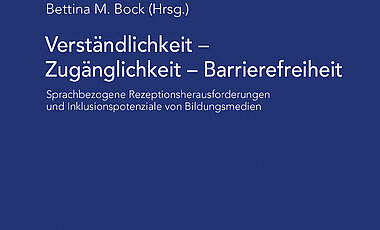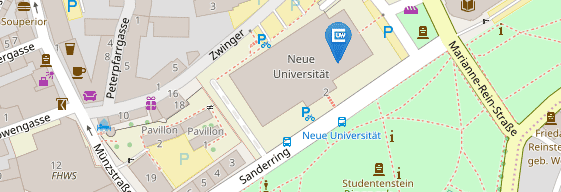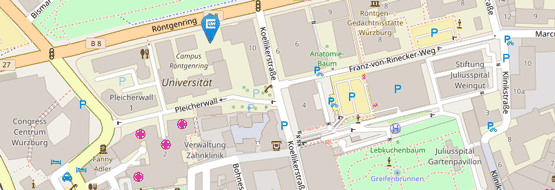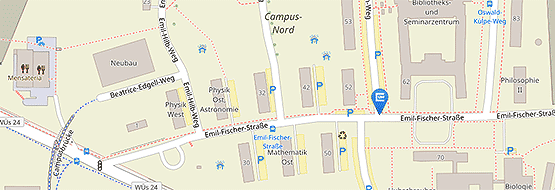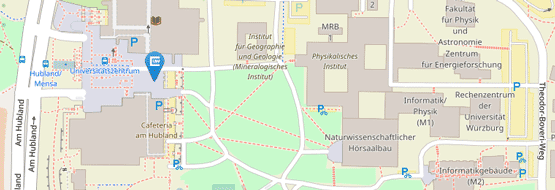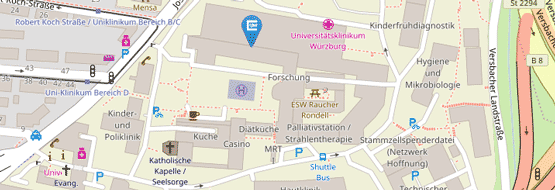Comprehensibility and Accessibility
10/21/2025How educational media must be designed to reach learners with different starting points: This is the subject of a new anthology. Co-editor is Dr. Christine Ott from the University of Würzburg.

When is a textbook, a non-fiction text or a poem good or difficult to understand? Why is this the case? When or why are texts considered accessible? Inclusive teaching and learning settings require materials that reach learners with different abilities: Media that are linguistically clear, visually well thought out and designed to be as accessible as possible. At the same time, they should not be underwhelming.
A new anthology is dedicated to this challenge: Dr Christine Ott, Chair of the Didactics of the German Language and Literature at Julius-Maximilians-Universität Würzburg (JMU), and Professor Bettina M. Bock, University of Cologne, have edited it. Their book "Verständlichkeit - Zugänglichkeit - Barrierefreiheit: Sprachbezogene Rezeptionsherauschallene und Inklusionspotenziale von Bildungsmedien" has been published by Peter Lang and si avalable in German.
Taking Different Learning Requirements into Account
"The volume takes an interdisciplinary approach to discussing how educational media should be designed to be accessible to as many learners as possible," says Ott. With the UN Convention on the Rights of Persons with Disabilities, an inclusive teaching and learning environment has become a requirement. It should enable people to learn together and on an equal footing, regardless of their individual circumstances. Educational media must also be scrutinised to determine how well they can be used by different learning groups in order to enable learning in the first place.
"In order to achieve this, we need to know which characteristics of educational media actually represent a barrier to reception for which learning groups," says the JMU researcher. Requirements for inclusive and more inclusive educational media can then be derived from this. With contributions from researchers from various disciplines - didactics, linguistics, inclusion pedagogy, multimodality research, learning psychology - the volume reflects the current state of research.
"Our aim with this anthology is to discuss not only the hurdles but also the inclusion potential of current educational media," explains Ott. A third focus is also on procedures for evaluating educational media in terms of their comprehensibility and accessibility. "We are also focussing on the transfer from our field of research to the practice of educational media use," says the researcher.
About Christine Ott
Dr Christine Ott is Akademische Rätin at the JMU Chair of the Didactics of the German Language and Literature. She has already received several awards for her educational media research at the interface of linguistics, didactics and educational science. Among others, she received the "Research Award 2018" from the Leibniz Institute for Educational Media | Georg Eckert Institute and the "Kulturpreis Bayern 2017" from Bayernwerk.
She currently heads an international network of the German Research Foundation at JMU, which is researching educational media in early childhood language education. Her work also focuses on digitality and diversity, cross-institutional literary and language learning and pragma didactics.
Publication
Ott, Christine/Bock, Bettina M. (ed.) (2025): Verständlichkeit - Zugänglichkeit - Barrierefreiheit: Sprachbezogene Rezeptionsherauschallengee und Inklusionspotenziale von Bildungsmedien. Berlin: Peter Lang (Forum Angewandte Linguistik; 71). DOI: 10.3726/b22872, ISBN: 9783631900123, hardcover, 396 pages, 79.95 euros.


